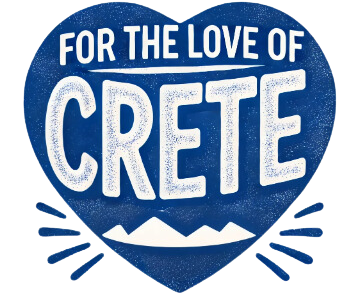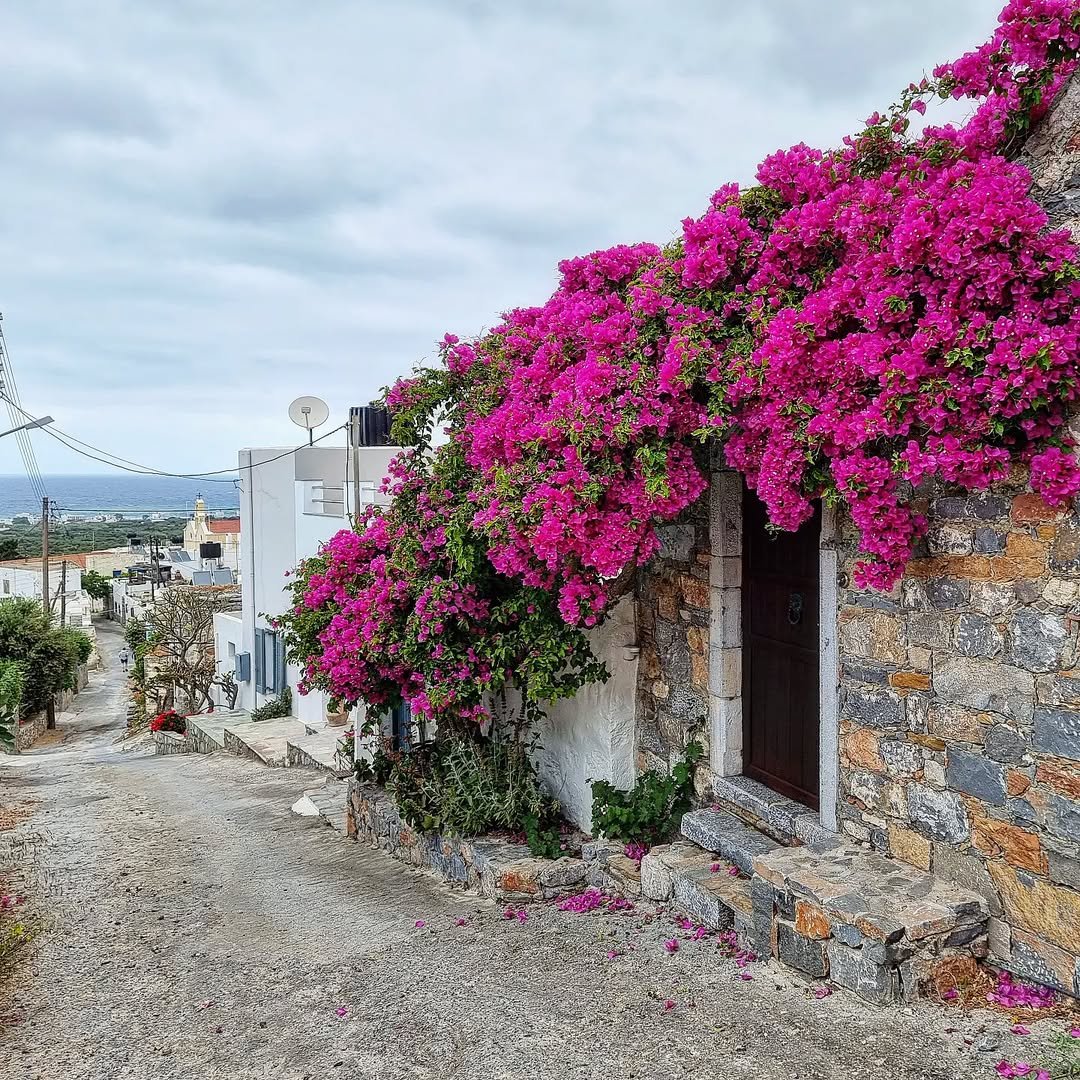Whether you’re a first-time visitor or someone who considers this magical island your second home, you’re probably here because you value authentic experiences. And let’s be honest – authentic is getting harder to find these days.
With tourism breaking records year after year (up 6.5% from pre-pandemic levels!), our beloved Crete is changing. New hotels spring up overnight, cruise ships disgorge thousands of visitors daily, and those charming little tavernas we discovered years ago? Some have morphed into something barely recognizable.
But here’s the good news: the real Crete still exists. It’s hiding in plain sight, sometimes just a street or two away from the crowded harbors and commercial beaches. Even in the most popular villages, genuine experiences await those who know where to look.
This guide is for those who already know Crete’s magic – but want to protect their experience from the growing tourist machinery. Even seasoned visitors can stumble into tourist traps as the island evolves, especially in those picturesque villages that have recently appeared on too many “must-visit” lists.
So let’s explore how you can sidestep the traps and rediscover the authentic heart of Cretan village life – the genuine hospitality, the unadulterated flavors, and those precious moments that keep drawing us back year after year.
1. Understanding Tourist Traps in Crete
Let’s be clear about what we’re avoiding here. A tourist trap in Crete isn’t just a popular spot – it’s a place that offers overpriced, inauthentic experiences designed to separate visitors from their euros while delivering minimal value. You know you’ve found one when the staff barely speaks Greek, the “traditional” menu is identical to the one next door, and suddenly a shot of raki costs €8.
These traps have increased in number, unfortunately, as tourism has boomed. Have you ever paid for an “authentic” Cretan meal only to discover it was frozen and microwaved? Or bought “local” herbs, only to spot “Product of China” in tiny print on the back of the package? I was quite shocked to find such imported herbs being sold in the village of Margarites, which is often celebrated for its authenticity and traditional crafts. Not what you’d expect from a place known for its pottery and cultural heritage, right?
The problem has spread beyond the obvious tourist centers. Even beloved villages can fall victim to the commercialization cycle. As a village gains popularity in travel blogs or social media, businesses pop up to cater exclusively to tourists. Before long, the authentic character that made the place special begins to fade.

Tourist traps take many forms:
- All-inclusive resorts that keep you isolated from real Cretan life
- Standardized tours rushing you through “highlights” without meaningful experiences
- Chain restaurants serving mediocre versions of traditional dishes
- Overpriced taxis targeting visitors with “special” rates
- Short-term rentals that have driven up housing costs for locals
The cruise ship effect compounds these issues. When massive ships dock, they flood port towns with thousands of visitors for just a few hours. Prices spike, crowds swell, and the authentic atmosphere temporarily vanishes. These predictable surges have reshaped entire neighborhoods in places like Chania and Heraklion.
Many Cretans are frustrated by these changes. Tourism provides essential income, but overtourism threatens the very culture that makes the island special. Villages that once had vibrant year-round communities now stand nearly empty in winter, with homes converted to vacation rentals and traditional businesses replaced by souvenir shops.
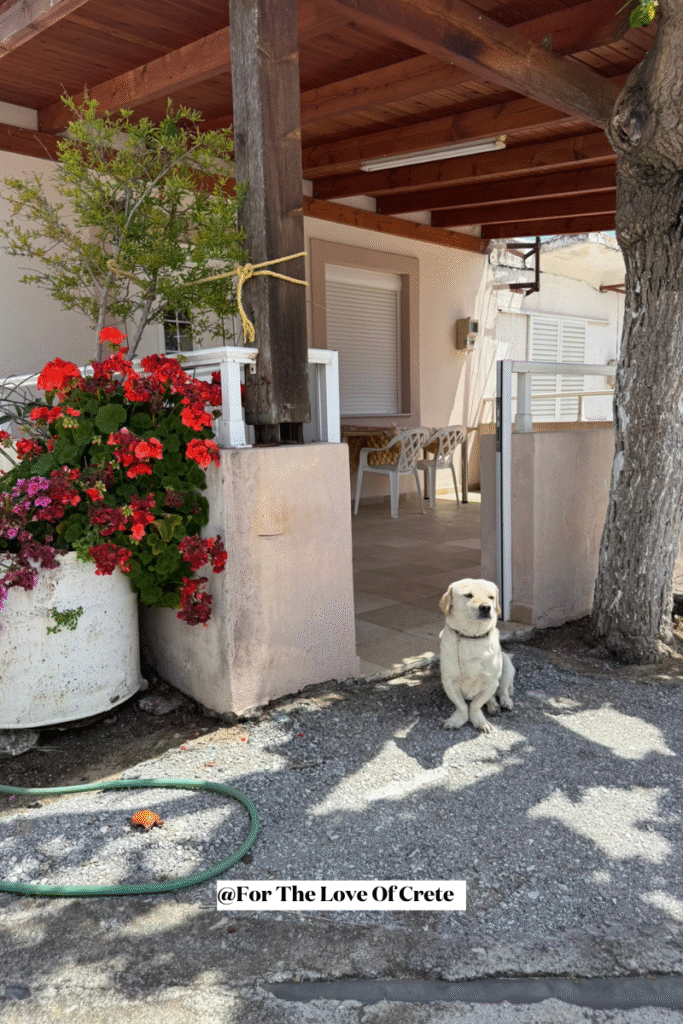
The good news? Locals appreciate visitors who seek authentic experiences and support responsible tourism. By making thoughtful choices about where you go, where you stay, and how you spend your money, you can enjoy a more genuine connection with Crete while helping preserve what makes it special.
2. Red Flags to Watch For When Exploring Cretan Villages
Knowing what signals a tourist trap can save you time, money, and disappointment. As you wander through Cretan villages, keep an eye out for these telltale warning signs:
Aggressive restaurant hosts standing outside trying to lure you in are a major red flag. Authentic tavernas let their reputation and delicious aromas do the talking – they don’t need someone pulling you off the street. When a host blocks your path saying, “Best moussaka in Crete, special price for you!” it’s time to keep walking.
Excessive international advertising is another clear sign. Places plastered with TripAdvisor stickers or “Recommended by” signs are often more focused on attracting tourists than maintaining quality. The most treasured local spots rarely need this kind of validation – they already have loyal customers who return year after year.
Pay attention to who’s eating there. If a restaurant is filled exclusively with tourists and you don’t hear a word of Greek being spoken, that’s telling. The best local spots always have a mix of visitors and locals. When you see elderly Cretan men gathered for their afternoon coffee or families celebrating special occasions, you’ve found somewhere authentic.
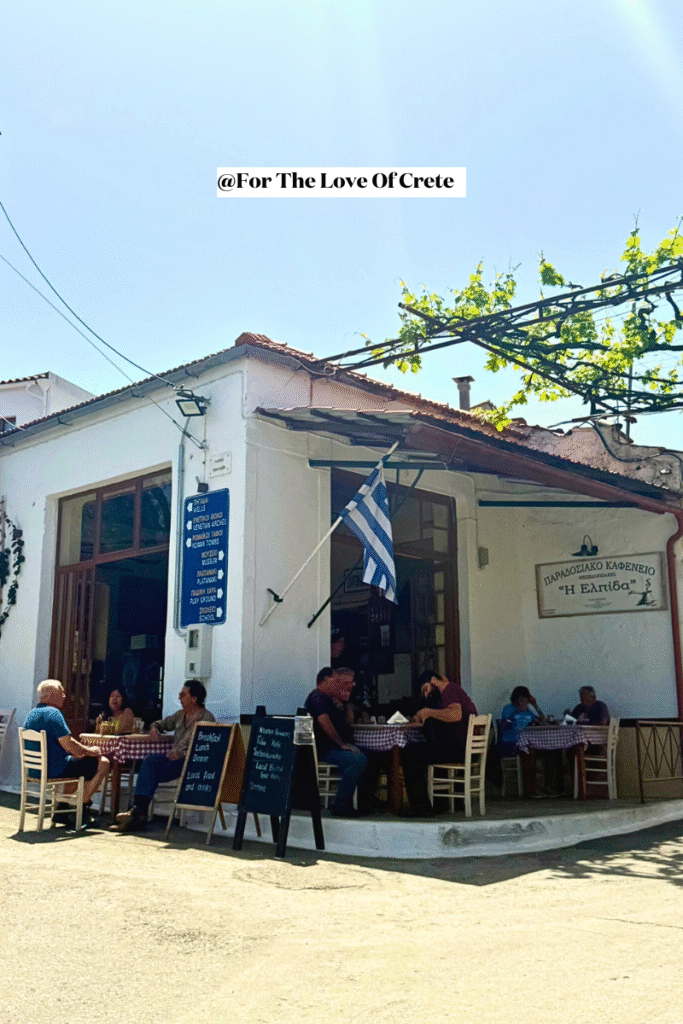
Price is a powerful indicator. In genuine Cretan establishments, raki and dessert are always on the house – it’s part of the traditional hospitality. If you’re being charged €6-8 for a shot of raki, or if the dessert appears as a line item on your bill, you’re definitely in tourist territory.
Watch out for these additional warning signs:
- Staff in exaggerated traditional costumes – authentic tavernas don’t need the theatrical outfits
- No seasonal variation in menus – real Cretan cuisine changes with what’s fresh and available
- Identical souvenirs in shop after shop – true crafts are unique and handmade
- Hidden charges appearing on your bill – cover charges, bread fees, or service charges that weren’t mentioned
- Suspiciously cheap branded alcohol – that €3 “Johnnie Walker” is definitely not the real thing
The prime location test rarely fails: businesses right next to major attractions or cruise ports prioritize high turnover over quality. Don’t be afraid to venture down side streets away from the main squares. Often, the most authentic tavernas are hiding just around the corner from the tourist crowds, where locals can enjoy their meals in peace.
Perhaps the most reliable indicator? Follow the older locals. That tiny, unassuming kafeneio where elderly Cretans gather for their morning coffee or evening raki has stood the test of time for good reason. These aren’t just places to eat and drink – they’re community institutions where authentic village life unfolds daily.
3. Choosing Cretan Villages and Areas Wisely
Even the most seasoned Crete lovers can struggle to balance “must-see” villages with authentic experiences. While Chania’s Old Town and Rethymno are undeniably beautiful, they’re also ground zero for tourist traps. The good news? Authentic alternatives are often just a short drive away.
Popular doesn’t always mean inauthentic, but it does require more savvy navigation. Here’s a quick guide to well-known villages:
- Kritsa: Beautiful but busy – stick to the side streets to find authentic textile shops and quiet kafeneia
- Archanes: Explore both upper and lower parts – don’t miss the local wineries and olive oil producers
- Matala: Famous for its caves and hippie history, but visit early morning or off-season to avoid crowds
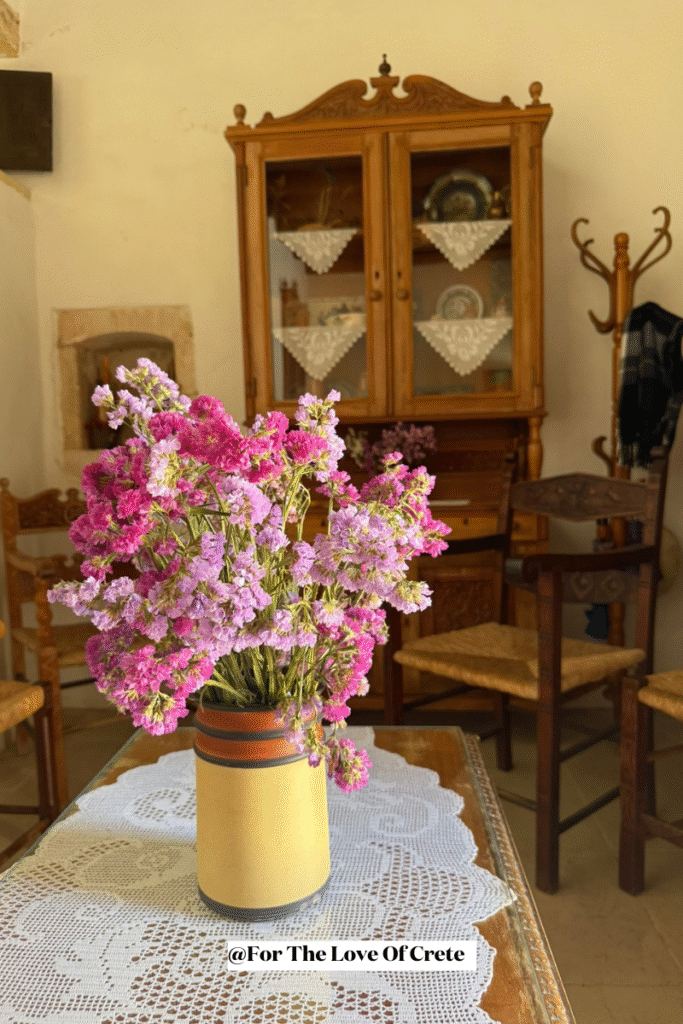
Timing matters tremendously. Even in tourist hotspots, the atmosphere changes completely in early morning or late evening when day-trippers have departed. Shoulder season (April-May, October-November) offers the perfect balance of good weather and authentic village life.
For the most genuine experiences, rent a car and explore lesser-known villages:
- Hora Sfakion: This tiny fishing village serves legendary Sfakian pie with genuine hospitality
- Topòlia: Enjoy cliffside tavernas and one of the island’s best baklava without a tour bus in sight
- Afrata: Wander flower-filled streets and visit local beaches free from sunbeds and loud bars
- Argyroupoli: Discover the “waterfall village” where you can lunch under plane trees by cascading springs
- Anogeia: Experience mountain traditions where shepherds still practice ancient customs
- Kapetaniana: Perched high in the Asterousia mountains with breathtaking views and stone architecture
- Houdetsi: Home to a music workshop and vibrant cultural scene surrounded by vineyards
- Vrysses: Relax in riverside cafés beneath plane trees and savor the village’s famously creamy sheep’s yogurt, a local specialty enjoyed by travelers and locals alike.
- Kritsa: Ancient village with narrow winding streets and traditional crafts
- Zakros: Remote eastern village near Minoan ruins and dramatic gorges
- Therisso: Historic mountain settlement with revolutionary heritage and local tavernas
- Gavalochori: Preserved architecture and folk museums showcasing authentic Cretan culture
Mountain villages offer particular charm. Sometimes the best approach is simply looking at a map, finding a small village that catches your eye, and driving there to explore.
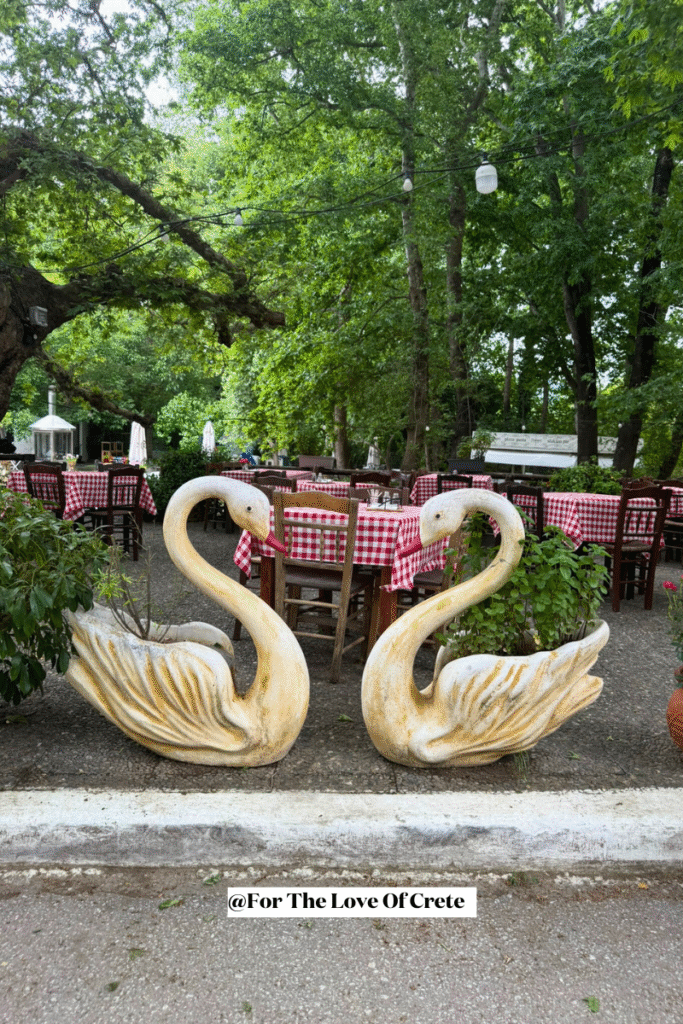
Car rental is essential for discovering authentic Crete. Public transport rarely reaches the most pristine villages, and the freedom to stop spontaneously when you spot a roadside honey seller or a hidden chapel is priceless.
If you can’t rent a car, consider staying in less touristy towns that still have bus connections, like Sitia or villages west of Stalos toward Kolimbari. These offer a balance of accessibility and authenticity.
A personal note: While I’d never stay in Chania’s Old Town (I fell in love with Crete primarily for its peaceful and tranquil spots), you might love being in the buzz. The key is making choices that match your ideal Cretan experience rather than following generic recommendations.
4. Dining and Shopping Like a Local
The heart of Cretan culture lies in its food and crafts. Finding authentic dining and shopping experiences gives you a genuine taste of island life while supporting the families who keep traditions alive.
Where to Eat
Look for the “pot restaurants” where what you see is what you get. Places like Ntounias in Drakona display the day’s dishes bubbling away in pots over open fires outside – no fancy menus needed. When Stelios and his family make you feel like a long-lost relative while serving food grown in their garden, you’re experiencing true Cretan hospitality.
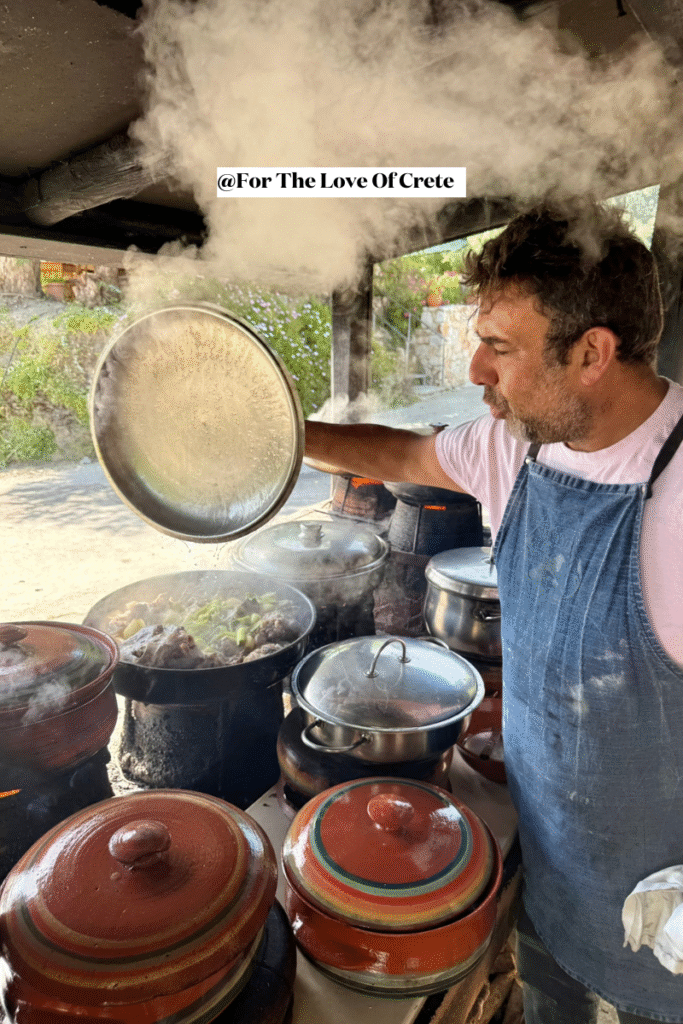
Follow the Greek customers, especially the elderly. If a taverna is packed with locals during their lunch hour (2-4 PM), you’ve struck gold. When you see multi-generational families gathered around tables for Sunday lunch, you’ve found something special.
Handwritten menus and daily specials are hallmarks of authenticity. These places cook what’s fresh that day, not what’s on a standardized menu printed in six languages.
Simple decor often signals exceptional food. Some of my most memorable meals have been at places with mismatched chairs, plastic tablecloths, and not a hint of “Greek” theming – just extraordinary home cooking.
A perfect example is Apokoronas Taverna (Ψητοπωλείο “Ο Αποκόρωνας”) on Apokoronou Street in Chania city. Whenever I land at Chania Airport, this is where I go for my very first meal: a no-frills, family-run grill house where locals gather for perfectly cooked meats, fresh salads, and honest, generous portions at friendly prices. There’s no tourist show here-just genuine Cretan flavors, a relaxed neighborhood atmosphere, and the kind of welcome that makes you feel like you’ve come home.
Watch for these authentic touches:
- Complimentary raki and dessert after your meal (never on the bill)
- House wine served in metal carafes, often from the family’s vineyard
- Real Greek and Cretan salad without lettuce – just tomatoes, cucumbers, onions, green peppers, olives, and a slab of feta (or mizithra and capers in a Cretan salad)
- Staff who take pride in explaining local specialties and family recipes
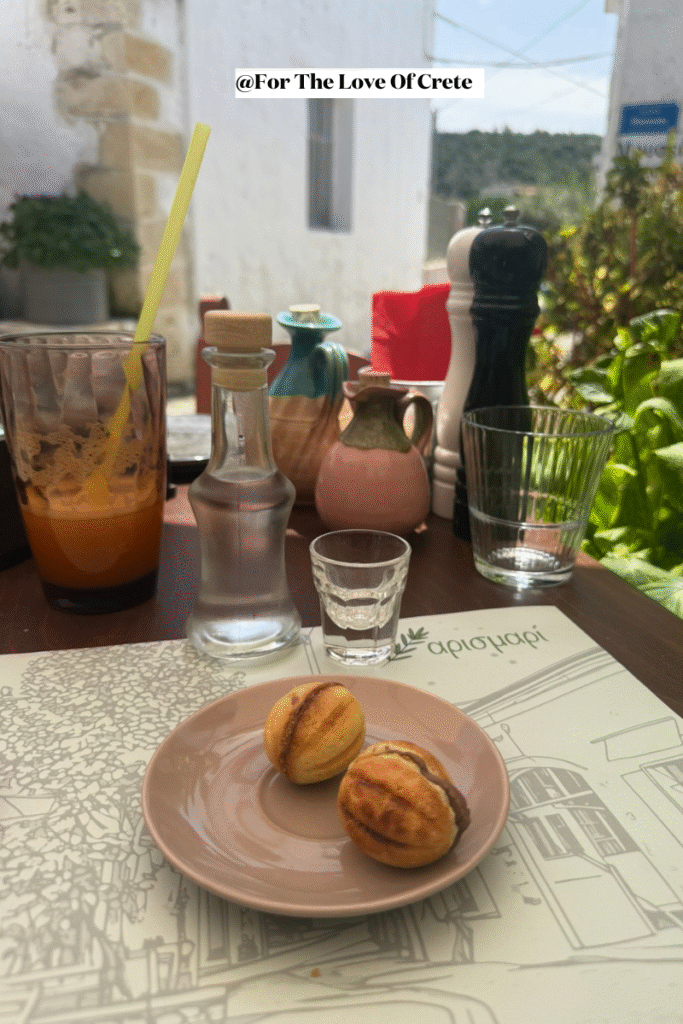
Shopping Smartly
Village markets (laiki agora) are treasure troves of authentic products. I buy all my thyme honey, propolis, herbs, veggies, and cheese at these weekly markets where you can chat directly with producers.
Meet the artisans in their workshops – potters in Margarites, knifemakers in Chania (“O Armenis” makes exceptional authentic blades), or weavers in Anogeia. Watching them work and hearing their stories adds immeasurable value to your purchases.
Look for the “Κρητικό προϊόν” (Cretan product) label or items marked with a specific village name. Be skeptical of mass-produced “traditional” items – authentic crafts show individual variations and artistry.
Taste before you buy when possible. Quality olive oil producers, beekeepers, and cheesemakers are proud to offer samples. Use this opportunity to learn about production methods and regional variations.
Shop where the locals shop. Those tiny grocery stores in village squares offer local products at fair prices – perfect for edible souvenirs or self-catering supplies.

The most valuable shopping advice? Ask locals for recommendations. Your accommodation host, a friendly periptero seller, or even someone at the next taverna table will often share their favorite spots with genuine enthusiasm.
5. Authentic Activities Beyond the Obvious
Skip the crowded tour buses and discover Crete’s true character through experiences that connect you with local culture, nature, and traditions.
Village festivals (panigiria) offer an unfiltered glimpse into Cretan life. These celebrations feature traditional music, spirited dancing, and abundant food and drink. Check village notice boards or ask locals about upcoming events – they often happen on saints’ days and aren’t widely advertised to tourists.
Food and farming experiences create lasting memories:
- Join a cooking class in a village home to learn family recipes for dishes like dakos, gemista, dolmades, or kalitsounia
- Visit family-run olive oil producers for tours and tastings – many small mills welcome visitors during pressing season
- Participate in seasonal harvests – picking grapes, gathering olives, or foraging for wild greens (horta) alongside locals
- Learn the secrets of traditional beekeeping or cheese-making from artisans who maintain centuries-old methods
Musical traditions remain vibrant in Cretan villages. Look for kafenia hosting impromptu lyra performances or mantinada recitations (poetic couplets). These gatherings rarely appear in guidebooks but represent the soul of Cretan culture.

Nature experiences away from the crowds:
- Hike the lesser-known gorges like Imbros, Agia Irini, or Katholiko instead of crowded Samaria
- Discover beaches such as Kedrodasos, Agiofarago, or Voulisma where you’ll share the sand with just a few locals
- Snorkel in secluded bays like Koutalas with its underwater caves and crystal waters
- Explore the island’s unique ecosystems – palm forests at Preveli, the Lassithi Plateau with its windmills, or mountain meadows filled with endemic wildflowers
Cultural immersion opportunities abound:
- Visit small village museums dedicated to traditional crafts, agriculture, or local history – gems like the “Historical and Folklore Museum of Gavalochori” or the “Museum – Headquarters of the Revolution of Therisso 1905” offer intimate glimpses into Cretan life
- Seek out unique local monuments like the “Monumento Kefalas”, a remarkable stone structure created by local artist Vangelis Vlepakis. This colorful stone welcome monument combines religious imagery with folk art traditions
- Explore the ancient chapels and frescoed churches that dot the countryside – many are unlocked by local keyholders happy to share their stories
- Join a traditional coffee ritual at a village kafeneio, where the art of Greek coffee preparation and unhurried conversation define the morning
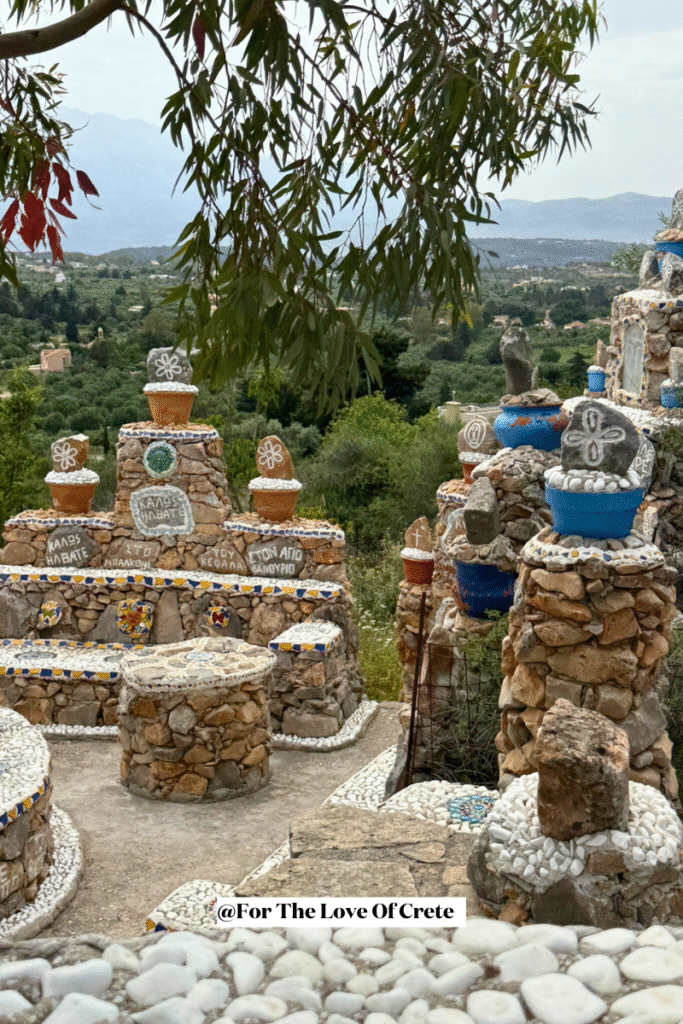
For the adventurous, consider combining experiences – perhaps a morning hike to ancient ruins, followed by lunch at an authentic taverna, and an evening at a local music gathering. These self-designed days often become the highlights of a Cretan journey.
Conclusion: Preserving the Soul of Cretan Villages
The true magic of Crete isn’t found in tourist hotspots but in authentic moments of connection with the island’s people, traditions, and landscapes. If it feels staged for tourists, it probably is. The most memorable experiences come when you step off the well-worn path, greet locals with a warm “Kalimera,” and adapt to the rhythms of village life rather than expecting it to conform to tourist expectations.
As visitors who cherish Crete’s authentic spirit, our choices matter. Offering fair payment to artisans, being conscious of your impact in small communities, respecting conservative values in remote areas, and accepting hospitality with grace all help preserve what makes these villages special. By seeking genuine experiences rather than manufactured ones, you not only avoid tourist traps but help ensure that the soul of Cretan villages continues to thrive for generations to come.
Further reading:
7 Things Cretans Do Differently From Western Europeans
What NOT to Do When Interacting with Cretans to Show Respect
8 Cheese Varieties You Need to Try in Crete (+ A Must-Visit Cheese Farm)
